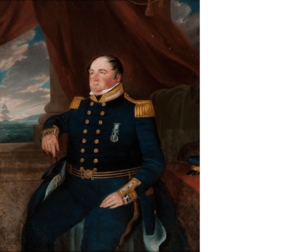Walkerville, South Australia facts for kids
Quick facts for kids WalkervilleAdelaide, South Australia |
|||||||||||||||
|---|---|---|---|---|---|---|---|---|---|---|---|---|---|---|---|

St Andrew's Anglican church in the heart of Walkerville
|
|||||||||||||||
| Established | 1838 | ||||||||||||||
| Postcode(s) | 5081 | ||||||||||||||
| Area | 1.34 km2 (0.5 sq mi) | ||||||||||||||
| LGA(s) | Town of Walkerville | ||||||||||||||
| State electorate(s) | Adelaide | ||||||||||||||
| Federal Division(s) | Adelaide | ||||||||||||||
|
|||||||||||||||
Walkerville is a suburb in Adelaide, South Australia. It is located just north-east of the city centre, about 4 kilometres away. Walkerville is known as a well-off area in South Australia. In 2012, it was even ranked as the second "top earning suburb" in the state.
Contents
The Story of Walkerville: Its History
Walkerville got its name from Captain John Walker, a captain in the Royal Navy. He bought land here in 1838. This was only two years after the very first settlers arrived in South Australia. The area was very appealing to these early settlers. In just a few years, it grew into a small village.
During the 1840s, Captain Walker faced some tough times. He had invested too much in land when prices were high, and then a big financial downturn hit the whole state. He ended up in prison for a short time because of debt. In 1849, he left South Australia to take a government job in Hobart. Even though his time in the state was short, his name lives on in the suburb.
How Walkerville Became a Town
The Walkerville Post Office opened on 1 January 1896. The Walkerville District Council was set up much earlier, in 1855. This happened after local residents asked to separate from the larger District Council of Yatala. At first, only Walkerville and Gilberton left Yatala. But within a few months, Medindie and North Walkerville (which is now part of Walkerville) also joined the Walkerville council. The council's borders stayed the same until 1970, when Vale Park was added.
Early council meetings were held in a room at the local pub, the Sussex Arms. This continued until 1893. That year, the foundation stone was laid for the current Town Hall on Walkerville Terrace. In 1908, the Institute Library started in a small room across from the council offices. In 1963, it became a public library. Then, in 1970, it moved next door into the old Walkerville Police Station building.
Schools in Walkerville
Walkerville is home to three primary schools:
- St Andrew's Anglican School was founded in 1850.
- Walkerville Primary School was founded in 1884.
- St Monica's Parish School opened in 1926.
Local Government and Representation
Walkerville is the main suburb and the centre of the Town of Walkerville council area. This council area is named after the suburb itself. Because Walkerville is an inner north-eastern suburb, it is part of the state electoral district of Adelaide. It is also in the federal electoral division of Adelaide. This means that people living in Walkerville vote for representatives in both the state and national governments.
Important Historical Buildings
Walkerville has many old and important buildings. One of these is St Andrew's Anglican Church, which even appears on Walkerville's official seal! Building the church started in 1847 and finished the next year.
At first, the church did not have a full-time reverend. The people attending relied on the headmaster of St Peter's College, Reverend T. P. Wilson, to lead services. In 1850, the church welcomed its first resident reverend, Reverend John Watson. The original church building was only 12 metres long. It was changed and made bigger many times in the second half of the 1800s. In 1857, a sanctuary (a holy part of the church) and transepts (parts that stick out from the main building) were added.
Reverend George Dove took over from Watson in 1882. He served the church for almost 50 years! In 1886, the original building was replaced with a longer main part (called a nave). A tower was also added. The clock in the tower was given by the wife of Henry Kent Hughes. You can still hear its bells ringing through the streets of Walkerville today.



